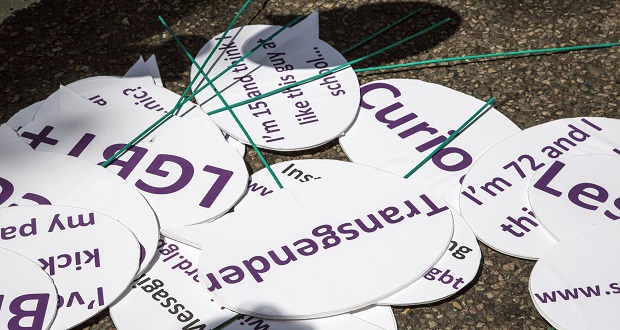 My very talented daughter, Mareisha, joined The Winters Group in February. An engineer and computer scientist with an MBA, she has already brought fresh and innovative ideas administratively as well as new insights that will be useful for our clients. She has been around my work on the periphery since she was born but now that she is immersed in understanding the ins and outs of D&I, she is perplexed by some of the same things that continue to be conundrums for us seasoned practitioners.
My very talented daughter, Mareisha, joined The Winters Group in February. An engineer and computer scientist with an MBA, she has already brought fresh and innovative ideas administratively as well as new insights that will be useful for our clients. She has been around my work on the periphery since she was born but now that she is immersed in understanding the ins and outs of D&I, she is perplexed by some of the same things that continue to be conundrums for us seasoned practitioners.
She is attending her fourth diversity and inclusion conference since joining the company, the Working Mother Media Multicultural Women’s National Conference in NYC this week.
Her main questions after each of the conferences are: So what happens now? What changes do attendees see? Do systems and practices change at the companies represented?
She has certainly been amazed that for most of our clients the key D&I issues are the same:
- Attraction of visibly diverse talent;
- Retention of visibly diverse talent; and
- Promotions of visibly diverse talent.
While I assure her that we have certainly made some progress in these areas over the last 30 years, it is not sustained. The glass, concrete and bamboo ceilings are intact and the revolving door continues to spin as visibly diverse talent moves from company to company, organization to organization in search of a culture that is truly inclusive.
I do not attend as many of the conferences anymore. It is too frustrating to hear the same stories over and over with the same handful of companies making notable, if not sustained progress and the same old issues being contemplated.
Don’t get me wrong. There are some major advantages to holding diversity and inclusion conferences:
- Keeps us focused on the issues.
- Helps those who are new to the field gain knowledge. Mareisha said that the Linkage Conference was a great learning experience for her.
- Provides attendees with strategies to navigate cultures that may not be as inclusive as they purport.
- Provides great networking opportunities.
- Provides opportunities to share best practices.
- New and innovative ideas emerge.
- Gives attendees new courage and inspiration to persevere.
The question that I am known to stand up and pose at the concluding plenary sessions of D&I conferences is much the same as the one Mareisha asks me:
What is the collective call to action as a result of the outcomes of the conference?
Some companies set attendance at D&I conferences as one of their goals. They include them in their budgets, and establish metrics based on number of conferences and number of employees attended…output not outcome measures.
I challenge us to set different metrics that would include measuring a return on investment. Such measures could include:
- Increased engagement among attendees.
- Retention and promotion rate changes.
- Policies or practices changed or implemented at the company as a result of replicating best practices.
The inclusion solution is the impact of attending various conferences on the key diversity and inclusion issues facing the company. Let me know if your company is conducting such outcome studies. I would love to keep the dialogue going on this topic.



















I don’t attend a lot of conferences because, like you, I hear and see a lot of repetitive messages and I have to ask myself if it’s worth the not-so-insignificant costs.
That being said, I do think many of the conferences that are out there can add value depending on where your respective organization is along the continuum of leveraging diversity management as a business process just as it would with managing finance, technology, sales and marketing, etc. It doesn’t hurt to learn from those at these conferences who are far along and getting results. I think the biggest learnings are understanding HOW the best companies are executing – we often times already know (or should know) the WHAT and WHY.
For many who are new to the field, these conferences can certainly add value. For those individuals and organizations who have “been at it” for a while, I think it can be more of a validation or calibration of where you are compared to others. I think more “tenured” practitioners do not attend as many because we have no shortage of understanding WHAT we have to do, our time is better spent in the business of getting it done within our respective organizations.
I struggle with the same questions and would love to hear others speak to how they are measuring the ROI given each of us collectively are spending an enormous amount of $$$ to attend these conferences and each of us still talk about the same issues we are having while not seeing the level of gains we would collectively want. Thanks for writing this and putting it out there to gain the perspectives of many.
Good question Marry-Frances! DNI conferences can be a great source of Diversity awareness and often succeed in energizing participants. Yet awareness and an energy boost does not improve business outcomes! Another problem is that these conferences often preach to the converted as many participants are DNI or HR professionals.
In 2005, while leading DNI at a Fortune 100 consumer packages goods company, we brought a two day DNI conference to 1,100 team leaders/people managers. By bringing the DNI conference to the leaders we cut down on cost and tied the outcome of their participation with a corporate need: Improve employee engagement.
Having the CEO kickoff the meeting sent a clear message that Attracting, Retaining and Advancing talent was not sufficient. The talent needed to be activated to deliver improved business results, which is the role of leaders. The overall conference theme was about change: Changing employee and customer demographics, changing competition, and the need for leaders to change their mindset on how to manage while motivating improved business outcomes (i.e innovation, process improvement, cost efficiencies…)
If we were successful in changing the mindset of 10 of the 1,100 leaders in attendance, I would have considered to have broken even. Anything above that number would yield a positive ROI for the conference.
Edwin Garcia
Hi Mary Frances, It was great to meet your awesome daughter. The D&I events are not too different from other conferences that I attend. Have come to believe that the value for me is the company contacts for business development. I have found that everyone’s experience level in the D&I space and personal career needs are different at these conferences. I agree with your and Mariesha’s questions and assessments and was also asked about the value by the WM team. Some things come to mind is a pre-post questionnaire of participants of their perceptions of their company, job, career satisfaction as a result of their attendance. What specifically they are taking away that will be useful. A list of next steps that they will do as a result of the conference, or needs would also be useful might also be helpful.